Explore Treviso, Italy: serene canals, historic charm, fine cuisine, near Venice & Prosecco country, perfect for a culinary retreat.
Read more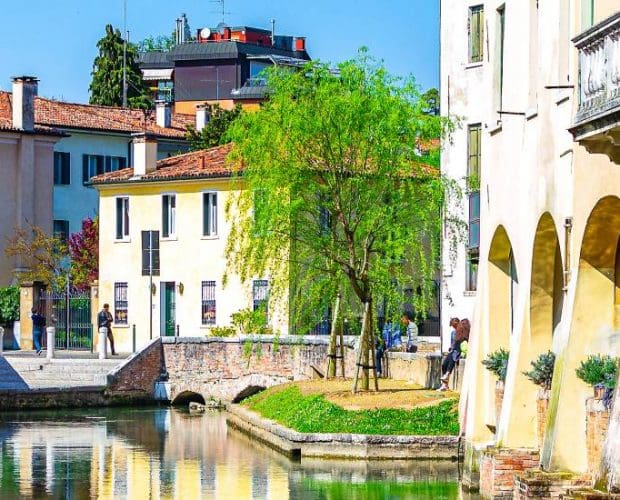
EXPLORE ALL OUR VENETO WINE REGION GUIDES
Last updated: May 30, 2024
The vineyards of Soave in northeastern Italy span a wide spectrum, from the very best wines to mediocre plonk churned out by lazy growers. However, the top estates that make their home in the hills of Verona, such as Pieropan, Pra, and Ca’ Rugate, are a testament to this region’s dedication and attention to detail. Their low yields, sustainable viticulture, and sophisticated winemaking produce complex dry whites of incomparable charm. This commitment to quality has been a part of Soave’s winemaking tradition since the Romans. This part of Soave is flourishing and deservedly so. But at the other end of the spectrum, we find Soave DOC and its permitted yields of 15 tons per hectare; producing this much wine is wildly excessive at the best of times.
Fortunately, the best houses eschew these generous crops, while the reputation of Soave Classico DOC (the original production zone) and Soave Superiore DOCG is growing constantly. Nevertheless, getting the best out of Italy’s seminal Garganega white requires research and discretion. Choose carefully, however, and you’ll discover why the critics still rave about the best wines of this iconic style.
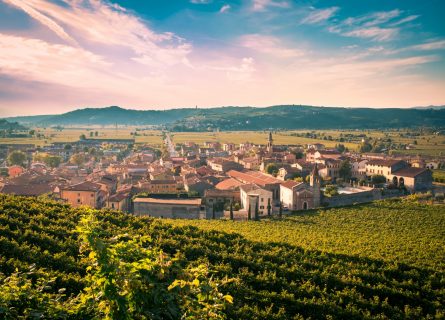
Soave is one of the most beautiful parts of the Veneto region: ancient volcanic soils play host to a myriad of crops, cypress trees, palatial villas, and vines. Farmers cultivate over 6000 hectares of vineyards in this bucolic landscape, stretching from Gambellara to the village of Lavagna on the border with Valpolicella. Historically, producers limited the production area to the vineyards north of Monteforte d’Alpone – now known as Soave Classico DOC. However, Soave’s geographical boundaries were extended significantly in the 20th century, driven by commercial greed rather than quality considerations.
As a result, there are now four distinct subregions in the zone: Soave, Soave Classico, Soave Colli Scaligeri, and Soave Superiore. Only the last entry has been awarded DOCG status and is reserved for the region’s best wines and terroirs. Here, yields (and farming methods) are a world apart from the maximum permitted crops sanctioned under the Soave DOC. In other words, there is Soave, and then there is Soave!
The Distinct Terroir of Soave Classico
Let’s delve into the unique world of Soave Classico. Flanked by the spectacular Lessini hills, Soave Classico is a treasure trove of high potential climats (vineyard sites) planted on exceptional soils: decomposed volcanic rock rich in basalt. According to the Consorzio, this black volcanic stone is responsible for the wine’s superior structure and perfume – two characteristics widely associated with Soave Classico and Soave Superiore. “The basaltic soil from which [Soave Classico] derives gives it an undisputed minerality that allows it to last and evolve over time. Definitely, a great white wine that today does not play second fiddle to the famous French white wines, with an enviable relationship between quality and value,” explains Igor Gladich, director of the Consorzio del Soave. He also identifies the south-facing aspect, soil infertility, and exceptional drainage as vital elements of the local quality equation; terroir is the kingmaker in Soave Classico, not winemaking.
However, the soils of Soave are not homogeneous. Significant outcrops of limestone are also present in the western expanse of the zone, concentrated around the villages of Mezzane, Lavagno, Illasi, Colognola Ai Colli, Soave, and Cazzano di Tramigna in the Soave DOC. Meanwhile, the cooling mists drifting off the PO River influence the continental climate; summers typically remain warm and quite humid, while winters become fairly chilly and inclement.
Elevation is also an important factor when assessing vineyard potential: the sloping hillsides of Soave Classico and Soave Colli Scaligeri benefit from diurnal temperature variation, which helps to moderate the summer heat and preserve freshness in the wines. This contrasts significantly with the more fertile sites of the western plains, where yields are high and standards (with notable exceptions) are low. Few people get excited about these low-grade wines, save the cooperatives and supermarkets.
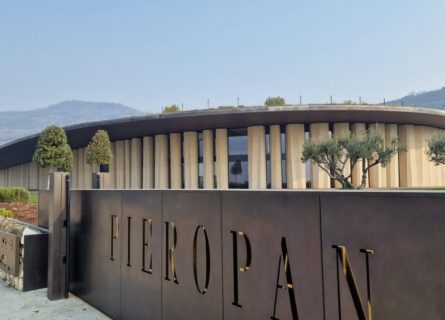
The Burgundians have long insisted that all great wine is made in the vineyard. In the case of Soave, that is a half-truth. The budget labels, for example, are made as quickly—and cheaply—as possible, with little thought given to terroir expression ortypicité. Wineries will likely harvest the berries by machine, cold-ferment them in stainless steel, and bottle them within a few months of the vintage—a neutral dry white for early consumption. It is hard to dislike and easy to forget.
Take, for instance, the winemaking process at Pieropan Soave Classico. Here, craftsmanship and quality reign supreme. The result is a beautiful dry white, renowned for its attractive bouquet of almonds and citrus. It stands tall when blind-tasted and compared to the leading white wine appellations of the world. This is a testament to the superior quality of the soils, the lower yields, and the nuanced winemaking techniques employed. While most agree that terroir is the final judge of quality in Soave Classico, the dedication and skill of the winemakers at Pieropan cannot be overlooked.
Regulatory Shifts and Quality Control
Historically, the blends permitted Pinot Blanc and Trebbiano Toscano; however, the DOC authorities have since outlawed these varieties as they considered them subpar. Today, a minimum of 70% Garganega must be used in every single bottle of Soave, potentially topped up with Chardonnay and/or Trebbiano di Soave (Verdicchio). The latter reportedly adds perfume and freshness to the robust Garganega, although mono-varietal wines also can shine brilliantly in competitions and tastings.
So, how do you make great Soave? The example set by Pieropan models for others to follow: they use only hand-picked grapes grown on volcanic and calcareous terroirs. The berries are then destemmed and crushed, with a small amount of sulfur used to prevent spoilage and oxidation. The free-run juice is vinified at very low temperatures (between 57-64°F) in glass-lined cement tanks; winemakers use this technique to preserve fruit and freshness in their wines. The young wine is then aged on its fine lees (dead yeast cells) for about eight months before it is transferred to bottle. The result is an intense, aromatically expressive white that can improve in bottle for at least 3-4 years.
Premier Cru Parallels: Pieropan La Rocca
Pieropan La Rocca, meanwhile, is emblematic of the complexity and mouth-filling texture that defines the best wines of this diverse appellation. Unlike the standard bottling, this single-vineyard label is handled in a way that bears close parallels with Premier Cru white Burgundy: a short period of skin contact increases phenolic extraction, leading to a fuller flavor and bigger structure. It is then fermented and matured in large (used) oak barrels, with 15 months of aging on the fine lees. Loved by consumers and critics alike, it is Italy’s answer to the finest Chardonnay whites of the Côte d’Or.
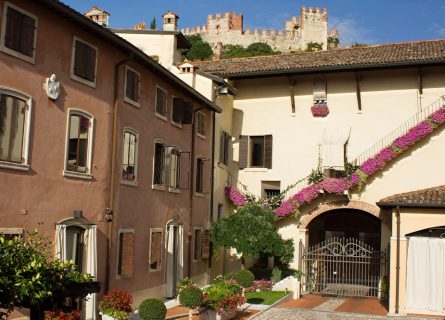
How can a wine region produce such marvelous and structured whites that people queue up to buy and yet be underperforming? How can it be a world leader in some places and so average in others? By being extremely large and diverse, that’s how. A tidy, catch-all summation of Italy’s most famous white wine is neither possible nor desirable. Soave is a multifaceted – and enigmatic – vineyard that simply refuses to be pigeonholed.
Soave’s Global Recognition and Impact
Yet, the entire region celebrated when Soave was recognized as a ‘Globally Important Agricultural Heritage System‘ (GIAHS) by the Food and Agriculture Organisation (FAO) of the United Nations. This rare honor was bestowed in 2018 after a decade of rigorous study and soil analysis overseen by a team of experts from the FAO. In a life-changing moment, it elevated Soave in the eyes of the world, positioning its unique territory and traditions alongside the saffron fields of Kashmir (India) and the wasabi fields of Shizuoka in Japan – both recognized as GIAHS by the UN. One of the most important agricultural organizations in the world today has given Soave’s outstanding terroirs the official seal of approval.
This represents Soave at its most inspiring. However, the area didn’t simply exploit the award to increase its reputation or renown. On the contrary, it has encouraged more winemakers to embrace sustainable and organic viticulture, sharing best practices and refining their viticultural methods. The best producers, meanwhile, are promoting an expanding volume of single-vineyard or cru bottlings, expressing such unique climats as La Rocca and Capitel Foscarino. Increased respect for the old, pergola-trained vines is also evident in Soave Classico today.
There are even centenarian plantings in the zone, such as the magnificent Contrada Salvarenza Vecchie Vigne, owned by Sandro Gini. All of this counterweights Soave’s bland, commercial face, which nonetheless provides a livelihood for hundreds of growers in the wider region. For that reason, we wish them well. But, as committed oenophiles, we cannot help but feel that quality-focused wineries deserve to thrive.
Chardonnay is a green-skinned grape varietal native to the Burgundy wine region in France and one of the most popular varieties worldwide.
Find out moreDiscover Garganega Wines: From Sweet Elegance to Vivacious Dry Delights | Explore the Complexity of This Exceptional Grape
Find out moreVerdicchio Wine: Italy's Fresh and Lively Whites. Discover the Crisp Elegance of Verdicchio from Marche and Veneto
Find out more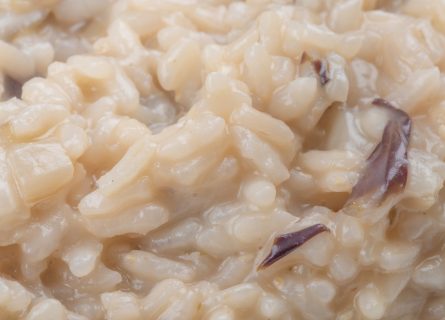
Verona, a large and prosperous city of the Veneto region, boasts magnificent Roman ruins, second only to those of Rome itself. Yet this beautiful city’s attractions are hedonistic and cerebral: the Centro Storico is full of exceptional restaurants, enoteche (wine bars), and osterie popular with locals and tourists. All these strictly adhere to fresh, seasonal ingredients and local cuisine – risotto with tastasal (minced pork), potato gnocchi, polenta, and the always delicious risotto all’Amarone. Arrive hungry.

Explore Treviso, Italy: serene canals, historic charm, fine cuisine, near Venice & Prosecco country, perfect for a culinary retreat.
Read more
Verona: A blend of romance, history, and culture, famous for Juliet's balcony, Roman amphitheater, and vibrant wine and opera scene.
Read more
Venice: A romantic labyrinth of canals and history, famed for its art, architecture, and timeless allure in the heart of Italy.
Read moreIf you would like us to customize an exclusive luxury tour, contact us and let us know your travel plans. We offer luxury food and wine tours for private groups of a minimum two guests. In addition, all of our private, chauffeured tours are available year-round upon request.

